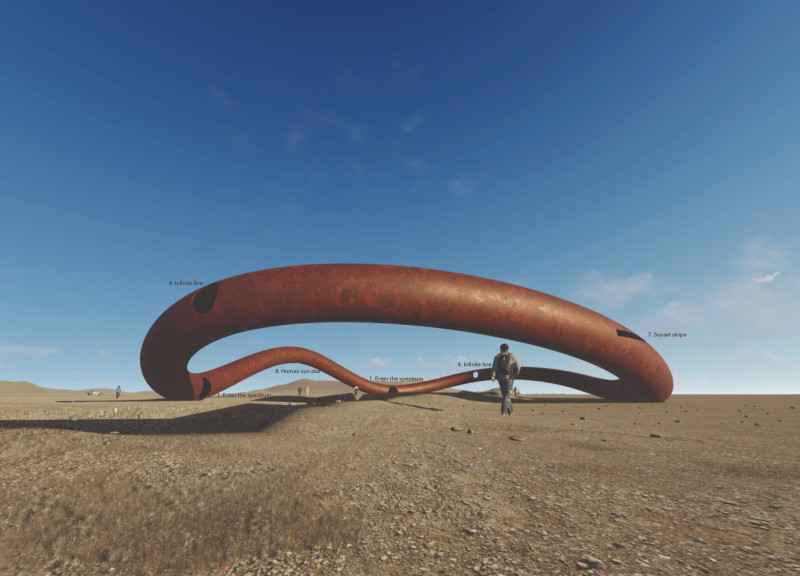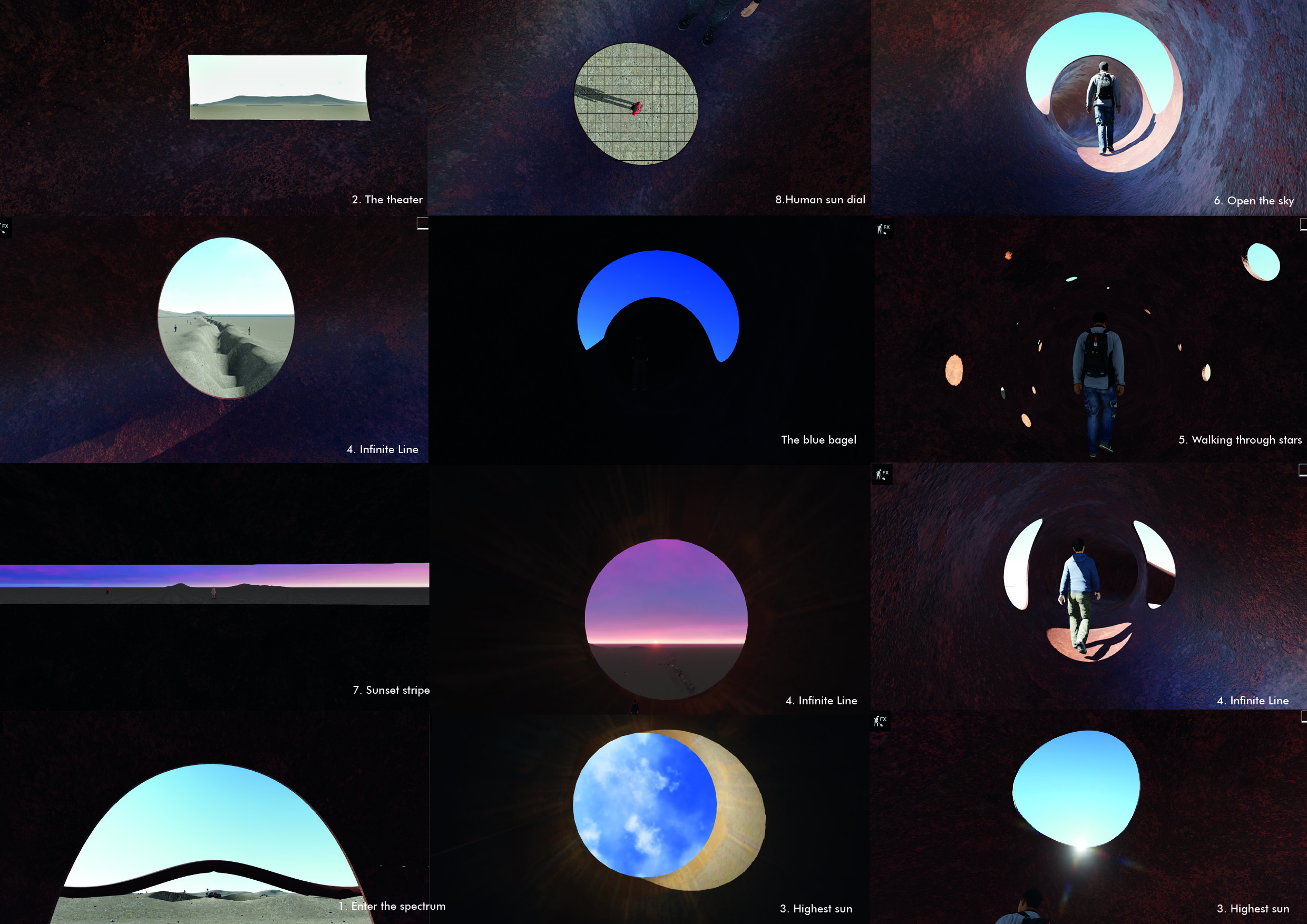5 key facts about this project
The architectural design titled "Spectrum of Time, Space, and Land" is located in the Grjotagja area, known for its dramatic landscapes and geological features. The design explores how light interacts with space, creating a setting where visitors can engage with their environment in meaningful ways. The concept revolves around a spectrum of light, providing a framework for understanding time and the surrounding natural elements.
Understanding Space Through Light
Light serves as a crucial element in the design, guiding the perception of space. The spectrum illustrates how light changes colors as it passes through various openings, emphasizing its dynamic nature. This thoughtful arrangement transforms the landscape into an interactive experience. Visitors are encouraged to observe how light alters their understanding of the location throughout different times of the day.
Interactive Components of the Design
Several key components define the overall design, including the Infinite Line, Enter the Spectrum, Human Sun Dial, Sunset Stripe, Vertical Tower, Horizontal Tower, Loop Tower, and Dialogue with Land. Each of these elements plays an important role in creating a cohesive environment. The Time Intersection, which highlights four types of time—Celestial, Geographical, Vehicle, and Human—adds depth to the project, helping users connect with both the natural rhythms of the landscape and their own experiences.
Materiality and Environmental Integration
Materials chosen for the design include perforated steel, concrete for footings, gravel for surface treatments, and corten steel for structural elements. These materials support the project's goals while ensuring durability and ease of maintenance. Their characteristics also help them blend within the natural setting, reinforcing the connection between the constructed features and the landscape.
The design encourages a closer relationship with solar phenomena. It carefully considers how light interacts with various elements at different times of the year, particularly during solstices. This focus allows the architecture to engage with the changing light in a meaningful way, highlighting the passage of time and creating a dialogue between the built environment and nature.






















































